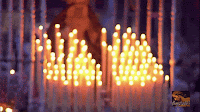Cordoba is a city in Andalucia, southern Spain, and the capital of the province of Cordoba on the Guadalquivir river, it was founded in ancient Roman times as Corduba by Claudius Marcellus.Today a moderately sized modern city, the old town contains many impressive architectural reminders of when Cordoba was the thriving capital of the Caliphate of Cordoba that governed almost all of the Iberian peninsula. It has been estimated that Cordoba, with up to 500,000 inhabitants in the tenth century, was the second largest city in the world after Constantinople.Cordoba is famous for its floral patio arrangements. Residents take great pride in their patios and compete to have the most beautiful. The city's old quarter is also famous for its distinctively white buildings and balconies decorated with flowers. The sidewalks of the town are also populated with orange trees, and
residents and tourists can occasionally be seen plucking an orange from one of the low branches.



